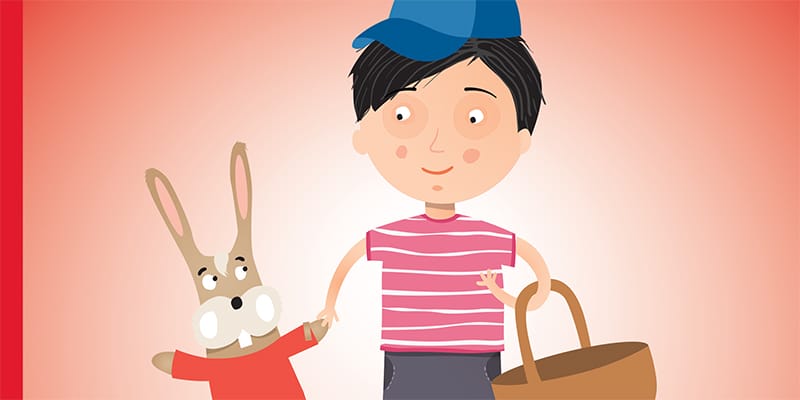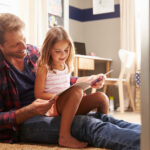MED-EL
Published Jun 10, 2020
Rehab Activities At Home: Introducing The Murat Reader Series

Reading to your child has a number of benefits including helping your child’s language and literacy skills to develop. Before your child is able to read and write by themselves, they must have a number of precursory literacy skills. Some of these include:
- An awareness of letters and words
- Understanding that printed words carry meaning
- Ability to understand and answer questions about short stories read to them
- Ability to generate and tell their own short stories
One way to support these prerequisite skills for reading and writing to develop is through shared book reading. Shared book reading is an interactive activity between a parent/caregiver and a child. The adult guides the reading in a way that encourages the child to join in and share in the experience. Shared book reading does not involve your child reading the words but sharing a conversation about the story.
You can start shared book reading with your child as soon as they will sit and look at pages of a book with you. For young children, this doesn’t mean they have to sit through a whole story, but they might share just a couple of pages at a time with you.
The Murat Reader Series
The Murat Reader Series was written to support parents/caregivers in shared book reading. Murat Goes Shopping consists of 10 picture pages which tell the story. Following each of the picture pages are instructions for you (parent/caregiver) including suggestions for things to talk more about and ideas for follow-up activities, many of which focus on listening. The additional activities allow you to extend the topic of the story through play to continue to develop your child’s vocabulary and language skills based around the topic of the story.
At the end of the resource, there are also black and white drawings of the main characters and objects in the story and the key events.
Print these materials out and cut and colour them with your child. Download them now.
While reading the story to your child and talking about the pictures
- Speak in sentences and avoid simply labeling items.
- Talk about what your child is interested in.
- Talk about what the characters are doing.
- Talk about your own experiences which are related to what is happening in the pictures e.g., we went to the grocery store yesterday and we bought eggs too.
- Involve your child in the story, for example, encourage them to pretend to peel and eat a banana
- While talking about a picture, introduce the relevant cut out characters and object cards. Attach the characters to paddle pop sticks and use them and the other cut outs to act out the story. Such activities will help your child to stay interested for longer, understand the events and allows you to provide repetitive language.
- Look at the book several times, as your child becomes more familiar with the story, they will be able to anticipate events
- Pull your child’s attention to interesting parts of the text (e.g., Look, this bubble shows us that Murat is talking. He said, ‘There are no eggs’).
- As your child is approaching school age, develop your child’s awareness of words that are required for reading and writing such as word, letter, sound, and sentence (e.g., This word is Mummy. It starts with the letter. It makes the ‘mm’ sound. Let’s read the whole sentence.).
- Comment more than question during shared book reading. Offer a statement or observation about the story or illustration and wait with expectation to invite your child to add a comment.
More ideas for shared book reading are included in Murat Goes Shopping and the other stories from the Murat Reader Series.
Murat Goes Shopping is available in 13 different languages including German, Russian, Spanish and Tamil. Murat’s Birthday Present, Murat Goes on a Picnic, and Murat Rides a Pony are available in English. This series is available for free download.
Looking for more rehab activities you can do at home with your child? The “Rehab At Home” series provides rehab videos and easy activities like craft activities or board games for your aural rehab sessions at home.
MED-EL
Was this article helpful?
Thanks for your feedback.
Sign up for newsletter below for more.
Thanks for your feedback.
Please leave your message below.
Thanks for your message. We will reply as soon as possible.
Send us a message
Field is required
John Doe
Field is required
name@mail.com
Field is required
What do you think?
MED-EL


